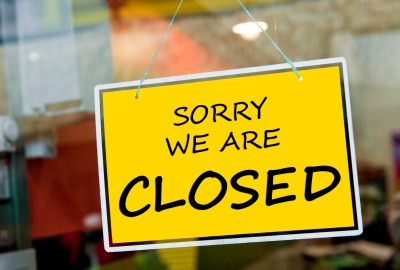 The closure of Bureau of Customs (BOC) offices for eight days in the next two weeks is expected to push yard utilization at Manila ports to high levels again.
The closure of Bureau of Customs (BOC) offices for eight days in the next two weeks is expected to push yard utilization at Manila ports to high levels again.
In a memorandum on December 9, BOC released the agency’s work schedule at the Manila International Container Port and Port of Manila from December 22 to January 19, 2015.
December 22 to 23 will be regular workdays, while December 24 is a reduced workday. BOC offices are closed from December 25 until December 28, to resume operations on December 29.
In the New Year, BOC offices are closed from January 1 to January 4, and will reopen for regular operations from January 5 to January 8. Reduced afternoon work is then expected from January 10 to January 11, with transactions slated to return to normal levels from January 12 to January 15.
For Pope Francis’ visit to the country (Jan 15-19), BOC will shut its offices from January 16 to 18, and resume on January 19.
Norman Adriano, secretary general of the Supply Chain Management Association of the Philippines, told PortCalls in a text message “any disruption in the supply chain affects the other parts in the supply chain.”
He noted: “Nothing moves out when BOC closes, but the influx of cargo continues. So there will be additional congestion inside the ports and the CYs (container yards).”
Adriano added “it will take time to correct that situation” and that “we are still correcting the effects of the Manila truck ban” and “now feeling the ban on Roxas Boulevard.”
Starting December 3, the Metropolitan Manila Development Authority (MMDA) has temporarily banned cargo trucks from using Roxas Boulevard for six months in anticipation of traffic to be created by upcoming events like Pope Francis’ visit, the Feast of the Black Nazarene (Jan 9), the Asia-Pacific Economic Cooperation summit on top of ongoing road projects like the Ninoy Aquino International Airport Elevated Expressway.
(MMDA on Dec 15, however, temporarily lifted the truck ban on Roxas Boulevard for five days [Dec 17-22], allowing cargo trucks to make night time deliveries from 12 midnight to 5am.)
“All of these are well intentioned but the results are disastrous to the supply chain,” Adriano pointed out.
The Roxas Boulevard truck ban has an effect on decongestion efforts, said Confederation of Truckers Association of the Philippines president Ruperto Bayocot, since “out of the 5,000 trucks, 40% are bound for South and Cavite.”
Because of the Roxas Boulevard truck ban, cargo trucks now have to use the southbound route, which translates to a three- to four-hour trip to the South compared to about 45 minutes on Roxas Boulevard, Bayocot told PortCalls.
MMDA assistant general manager Atty. Emerson Carlos, in a text message to PortCalls on December 12, said the Metro Manila Council has not yet set a date for the hearing of CTAP’s request to use the inner lane of Roxas Boulevard from 12 midnight to 6 a.m.
Samson Gabisan, director of the Chamber of Customs Brokers, Inc., told PortCalls in a text message that with the reduced work hours at BOC, utilization at Manila ports “might reach 90% again” in December and January and might spill over to February, the start of the lean months. Even if banks are open, Philippine dealing systems needed for bank remittance might be closed.
Patrick Ronas, president of Association of International Shipping Lines, told PortCalls in a chance interview that shippers might still be able to withdraw some shipments pre-processed before the BOC work stoppage, but these cargoes are only “minimal” in number and far below the daily withdrawal of 4,500 containers from the Manila ports, potentially resulting in a backlog.
Moreover, he noted that advance processing of shipments by some shipping lines will have to stop “to a certain point because their ships are not yet docked.”
Ronas said discharging of vessels will still continue despite the BOC closure, but “you cannot get out of the gate” and while you can pay online, some processes are still manual and require BOC transactions.
Pre-congestion, Ronas said clearing of vessels was “very fast” and only took one-and-a-half days. But now clearing of vessels can take three days, depending on the size of the ship, due to the long vessel queue. As of last week, there were 12 vessels waiting to berth at the Manila International Container Terminal.
Ronas said about 12 vessels could potentially be left idle inside the ports until the BOC begins to operate again.
The shipping line executive said congestion might ease by the first quarter next year, but if it does not, then it could spill into the second quarter and overlap with the peak season. – Roumina Pablo
Image courtesy of artur84 at FreeDigitalPhotos.net





